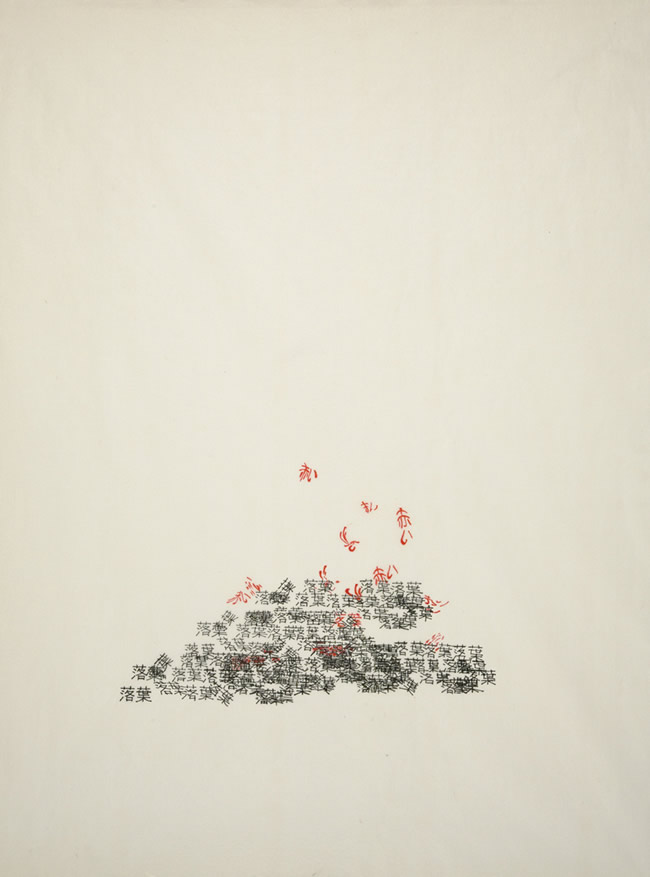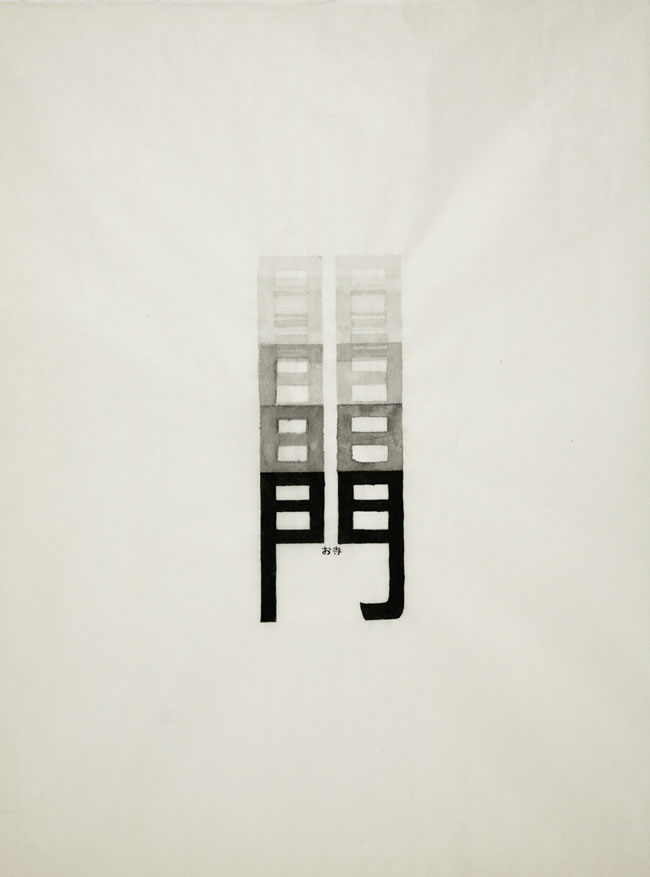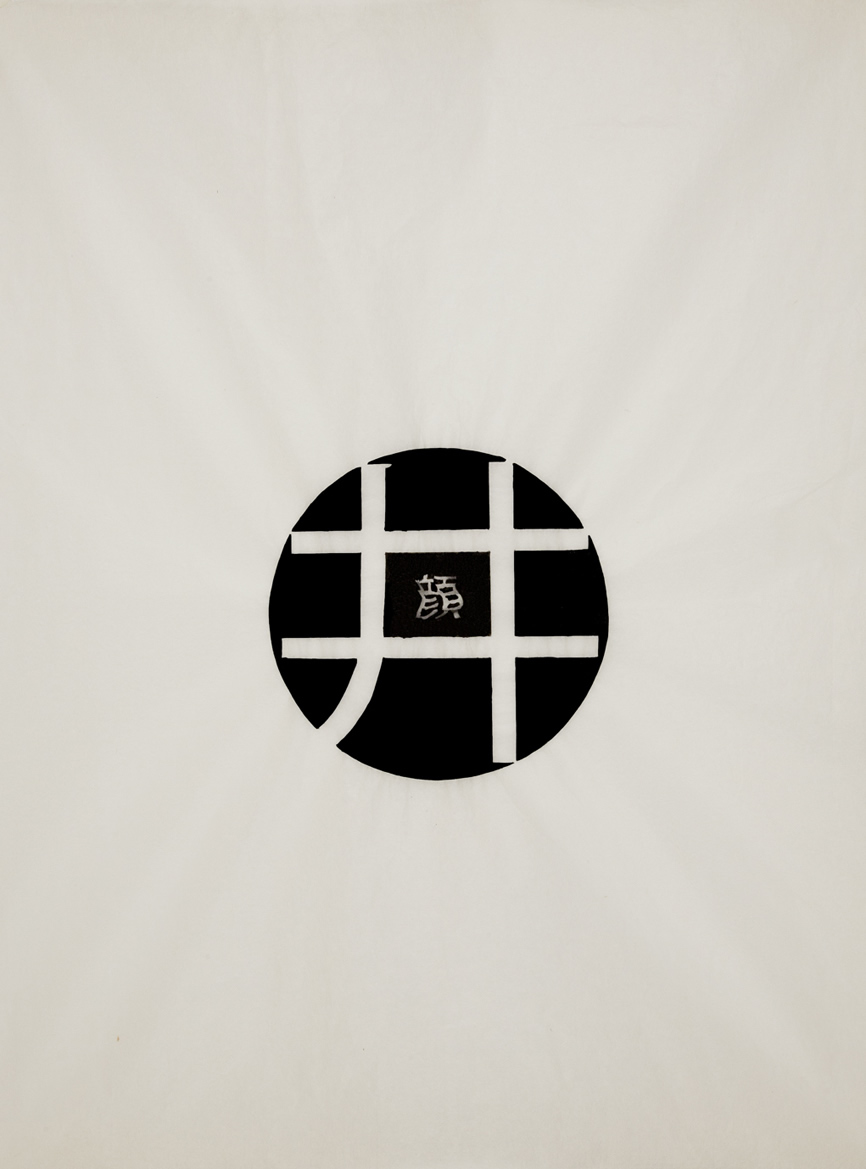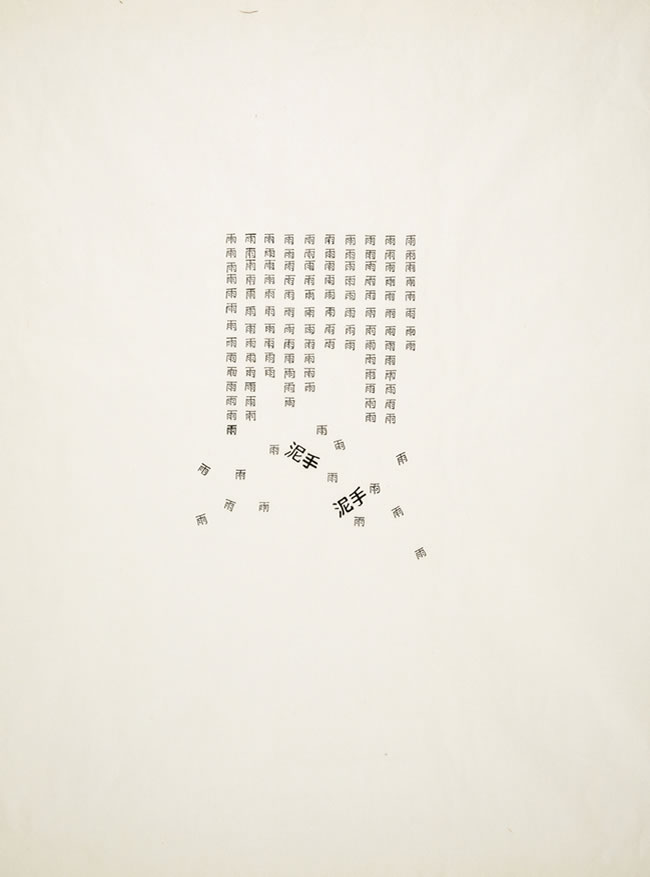NONI LAZAGA
Calikanjigramas
Exposición: 9 – 18 mayo 2019
Presentación del libro Muevo mi sombra
Haikus escogidos de Ozaki Hoosai, con 20 calikanjigramas y un posfacio de Noni Lazaga. Traducción: Teresa Herrero. Edición: Hiperión
9 de mayo a las 19 h.
Intervienen:
Noni Lazaga: artista
Jesús Munarriz: poeta y editor. Editorial Hiperión
Toru Shimizu: Ministro de la Embajada del Japón en España
Pilar Cabañas: profesora de Historia del Arte de la UCM, investigadora en arte japonés y su interacción con occidente.
La artista Noni Lazaga (Madrid, 1966) presenta en La Caja Negra la exposición Calikanjigramas. Esta muestra, compuesta por 20 dibujos y una instalación, propone un juego en relación a la construcción y deconstrucción de los caracteres japoneses o kanji. Para ello la artista inventa un nuevo término “calikanjigrama”, haciendo un guiño irónico a los caligramas surrealistas, para denominar los poemas visuales que surgen de la transformación de los ideogramas.
La creación de los calikanjigramas surge en 2017, cuando Teresa Herrero traductora del libro de haikus de Ozaki Hoosai Muevo mi sombra , editado por Hiperión, le pregunta a la artista si quiere realizar unas ilustraciones para esta edición. A raíz de este encuentro, Noni Lazaga le propone un diálogo con los poemas del autor que no se base en ilustraciones, sino en trabajar con los propios ideogramas que construyen el poema en japonés, independientemente del significado final del haiku. La artista crea de esta manera una relación plástica y visual libre con el poeta a través de cada dibujo. Pero los calikanjigramas no siempre parten de un poema previo sino que su creación mantiene un concepto dadaísta, como se ve en algunos de los dibujos expuestos realizados recientemente que ya no pertenecen al libro. Plásticamente se trata, por un lado, de una visión abstracta en la que escritura, espacio y ritmo representan la interpretación libre del poema, y por otro, figurativa, en cuanto a que se reconocen los kanjis aun cuando estos se contraen, estiran, repiten y superponen en muchos de los calikanjigramas.
Lazaga rescata así sus conocimientos del idioma japonés volviendo a épocas anteriores de su trabajo, cuando tras diversas estancias en Japón entre el 1994 y 1998 compuso obras en las que el kanji y las caligrafías orientales fueron sintetizadas hasta convertirse en una línea abstracta con la que dibujaba en el vacío.
Junto a los calikanjigramas originales de tinta sobre papel japonés, se exhiben también 2 obras, de la serie Aida ni (a través) serie A, que recogen las investigaciones que le llevaron a convertir la línea en hilo y la tinta en fibra de papel para dibujar y pintar literalmente en el espacio. En estas cartografías espaciales planteaba un componente caligráfico en relación con el ser humano y su devenir en el espacio, relacionado con lo fortuito y lo controlado, en un a través continuo , jugando con su percepción del lleno y el vacío. En la muestra actual, la visión poliédrica se sugiere a través de la multiplicidad de significados que adquieren lo ideogramas trasformados y sintetizados según el conocimiento del idioma japonés que el espectador posea, incluyendo el no conocimiento, como punto válido de partida.
Esa visión múltiple coincide con la experiencia vital de Lazaga, quien ha desarrollado una carrera internacional a través de becas y proyectos artísticos, que le han llevado a residir en diferentes países como Japón, Egipto y República Dominicana, entre otros. Culturas que han ido marcando su obra y sus investigaciones sobre la experiencia visual y lo existencial con un interés especial por las caligrafías orientales y el diálogo Oriente-Occidente. Entre sus investigaciones teóricas destacan: Washi, el papel japonés, Ed. Clan, 2002 y 2014, donde Lazaga abordó la historia y elaboración de este material y puso en valor el trabajo de los maestros papeleros japoneses y La caligrafía japonesa. Su origen y evolución y su relación con el arte abstracto occidental, Ed. Hiperión 2007, que recoge de forma rigurosa la introducción del arte caligráfico en Japón, desde China, el desarrollo de estilos propios en esa cultura y el significado de la caligrafía japonesa de vanguardia a primeros del siglo XX y su relación con el arte occidental.
En los últimos años su obra ha sido incluida en exposiciones colectivas como El Principio Asia. China, Japón e India y el arte contemporáneo en España (1957-2017), Fundación Juan March, (2018) y ha realizado proyectos y exposiciones individuales en instituciones a nivel nacional e internacional La casa del Laberinto,CEART, (2015); Soñar o no Soñar, Instituto Cervantes de Delhi (India, 2015); To dream or not to dream, Protea Gallery (San Diego, USA) 2013; Bienal Internacional de Arte Efímero (Granada, 2008); ARCO, Galería Egam (2002); Secretos de un mundo plegable, Galería Amparo Gamir (2007); Museo del Papel (Mino, Japón 1998); Fine Arts Museum (Alejandría); Instituto Cervantes (Cairo) y diversas exposiciones en itinerancia por la red de Centros Culturales de Centroamérica con AECID, etc.
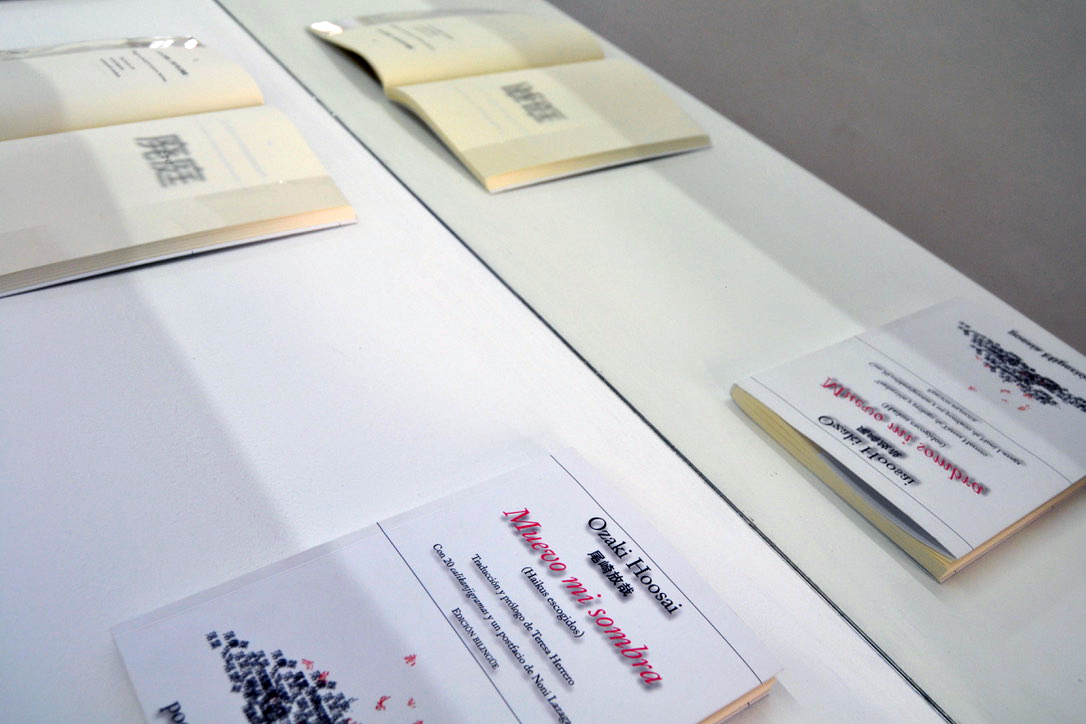
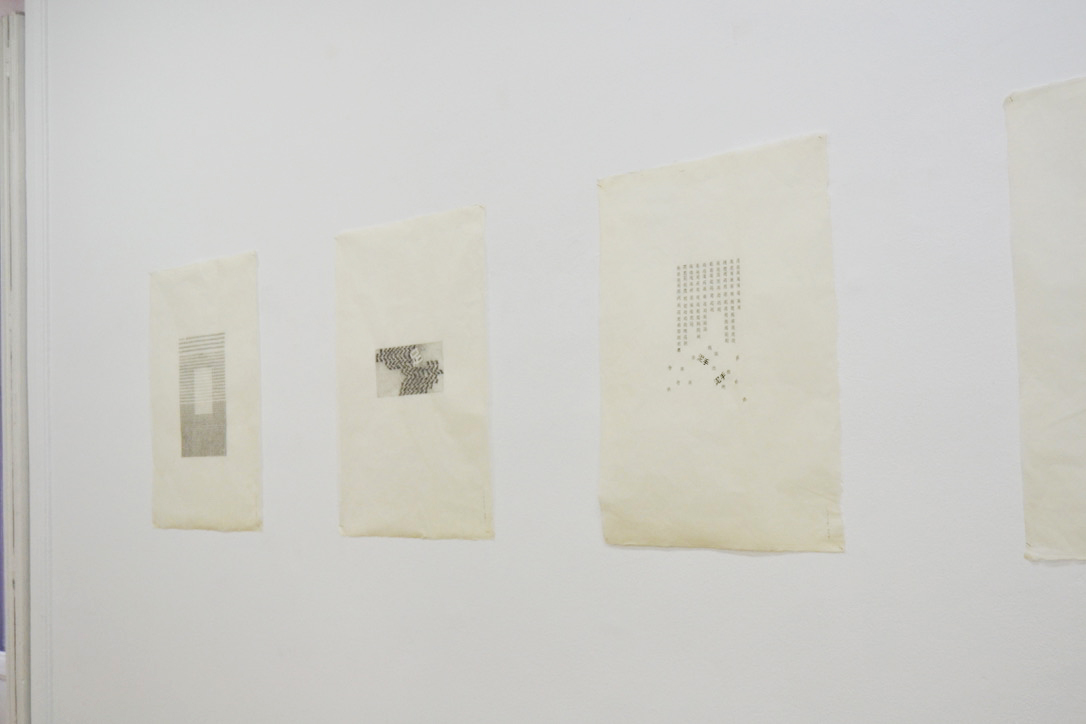
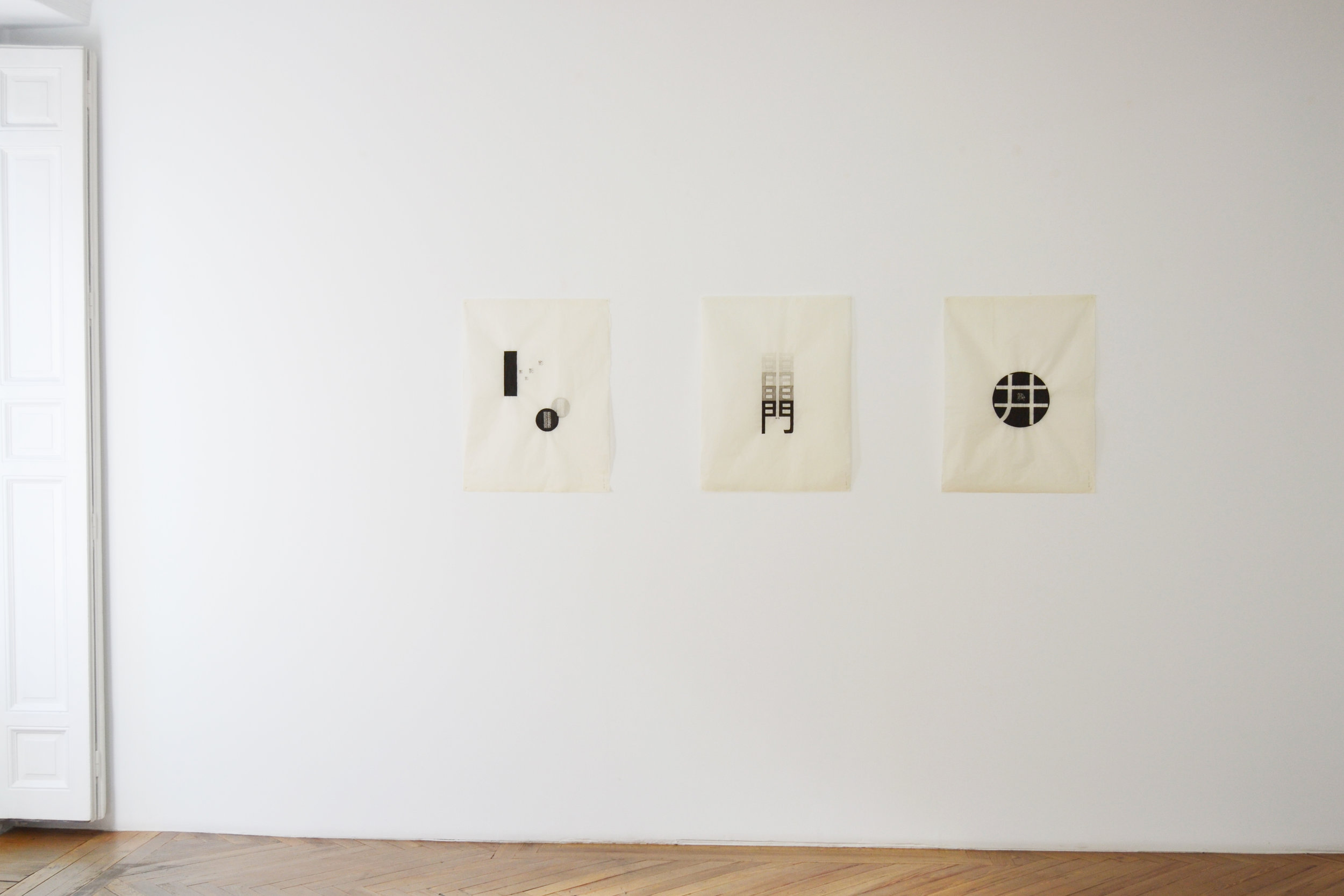
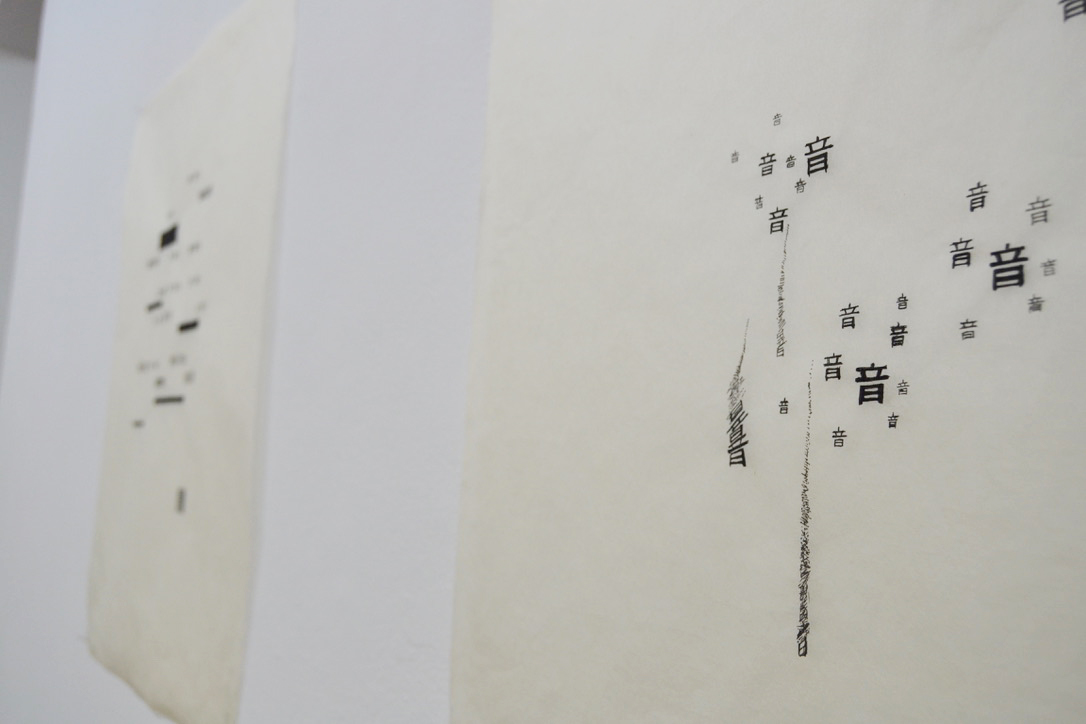
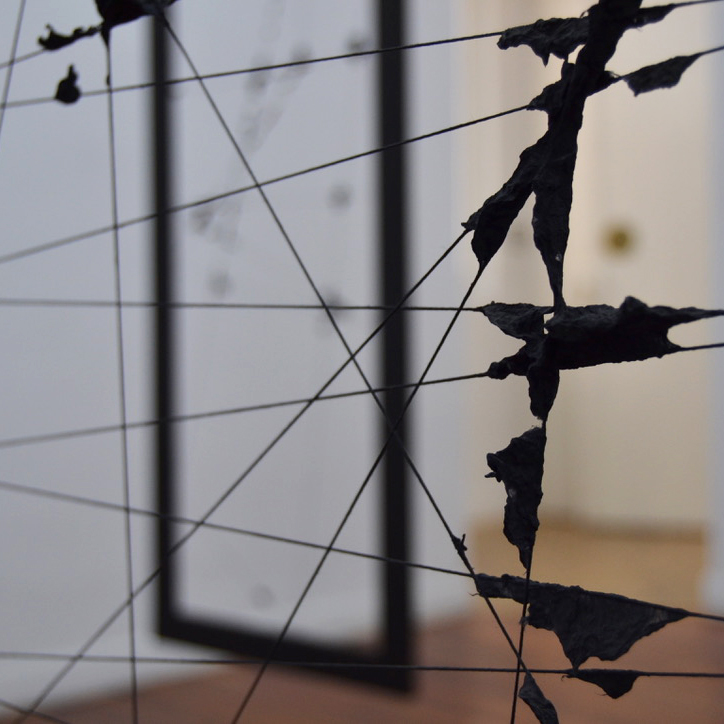
NONI LAZAGA
Calikanjigramas
Exhibition: from 9 to 18, May
Presentation of the book Muevo mi sombra
Selected Haikus by Ozaki Hoosai, with 20 calikanjigramas and a postface by Noni Lazaga. Translation: Teresa Herrero. Edition: Hyperion
May 9 at 7 pm.
Speakers:
Noni Lazaga: artista
Jesús Munarriz: poeta y editor. Editorial Hiperión
Toru Shimizu: Ministro de la Embajada del Japón en España
Pilar Cabañas: profesora de Historia del Arte de la UCM, investigadora en arte japonés y su interacción con occidente.
The artist Noni Lazaga (Madrid, 1966) presents the exhibition Calikanjigramas in La Caja Negra. This show, composed of 20 drawings and an installation, proposes a game in relation to the construction and deconstruction of Japanese characters or Kanji. For this the artist invents a new term "calikanjigrama", making an ironic wink to the Surrealist calligrams, to name the visual poems that arise from the transformation of the ideograms.
The creation of the calikanjigramas arises in 2017, when Teresa Herrero, translator of the haikus book by Ozaki Hoosai Muevo mi sombra, edited by Hiperión, asks the artist if she wants to make some illustrations for this edition. Following this meeting, Noni Lazaga proposes a dialogue with the author's poems that are not based on illustrations, but on working with the ideograms that construct the poem in Japanese, regardless of the final meaning of the haiku. The artist creates in this way a free visual and plastic relationship with the poet through each drawing. But the calikanjigramas do not always start from a previous poem but its creation maintains a Dadaist concept, as seen in some of the recently made exposed drawings that no longer belong to the book. Plastically it is, on the one hand, an abstract vision in which writing, space and rhythm represent the free interpretation of the poem, and on the other, figurative, in that the kanjis are recognized even when they contract, stretch, repeat and they overlap in many of the calikanjigramas.
Lazaga thus rescues his knowledge of the Japanese language by returning to previous periods of his work, when after several stays in Japan between 1994 and 1998 he composed works in which kanji and oriental calligraphy were synthesized to become an abstract line with which he drew in the void.
Along with the original ink calikanjigramas on Japanese paper, two works are also exhibited, from the series Aida ni (through) series A, which gather the investigations that led her to convert the line into thread and the ink into fiber paper for draw and paint literally in space. In these spatial cartographies he posed a calligraphic component in relation to the human being and his becoming in space, related to the fortuitous and the controlled, in a continuous through, playing with his perception of the full and the void. In the current sample, polyhedral vision is suggested through the multiplicity of meanings acquired by the ideograms transformed and synthesized according to the knowledge of the Japanese language that the viewer possesses, including non-knowledge, as a valid point of departure.
This multiple vision coincides with the life experience of Lazaga, who has developed an international career through scholarships and artistic projects, which has led her to reside in different countries such as Japan, Egypt and the Dominican Republic, among others. Cultures that have been marking her work and her research on the visual experience and the existential with a special interest in oriental calligraphy and the East-West dialogue. Between her theoretical investigations they emphasize: Washi, El papel japonés, Ed. Clan, 2002 and 2014, where Lazaga approached the history and elaboration of this material and put in value the work of the Japanese papermakers masters and the Japanese calligraphy. Its origin and evolution and its relationship with Western abstract art, Ed. Hiperión 2007, which rigorously includes the introduction of calligraphic art in Japan, from China, the development of its own styles in that culture and the meaning of Japanese calligraphy. avant-garde at the beginning of the 20th century and its relationship with Western art.
In recent years his work has been included in group exhibitions such as The Asia Principle. China, Japan and India and contemporary art in Spain (1957-2017), Fundación Juan March, (2018) and has carried out projects and individual exhibitions in national and international institutions La casa del Laberinto, CEART, (2015); Soñar o no soñar, Instituto Cervantes de Delhi (India, 2015); To dream or not to dream, Protea Gallery (San Diego, USA) 2013; International Biennial of Ephemeral Art (Granada, 2008); ARCO, Galería Egam (2002); Secrets of a folding world, Amparo Gamir Gallery (2007); Paper Museum (Mino, Japan 1998); Fine Arts Museum (Alexandria); Instituto Cervantes (El Cairo) and various exhibitions roaming through the network of Cultural Centers of Central America with AECID, etc.

